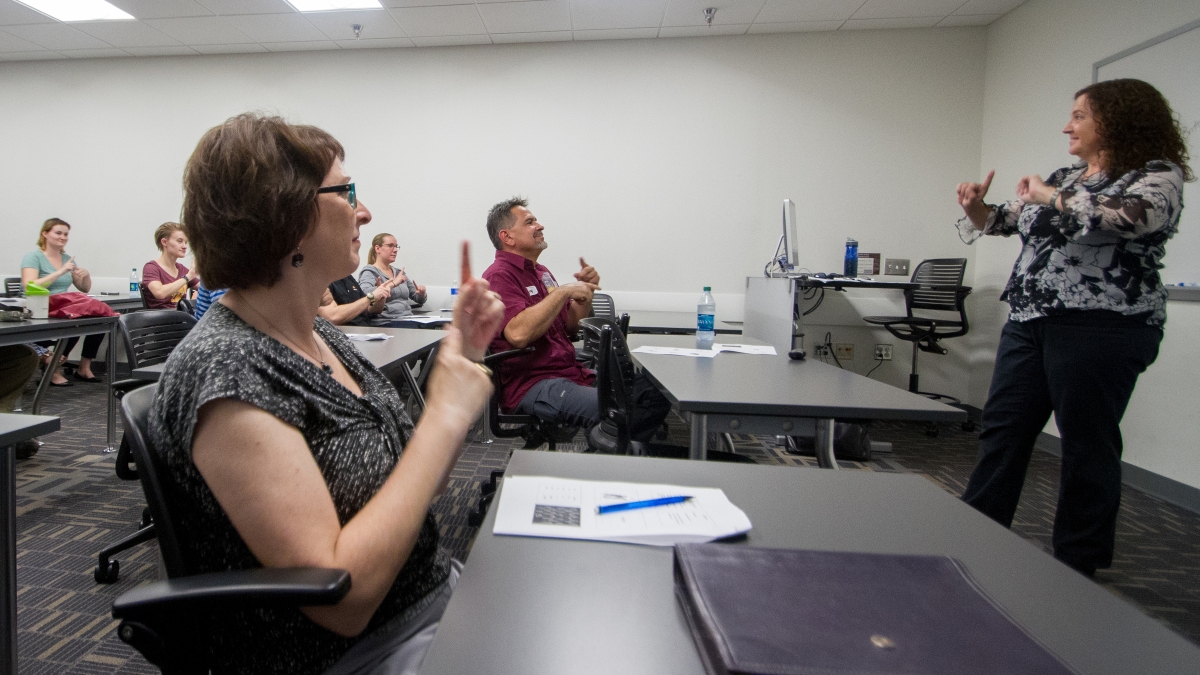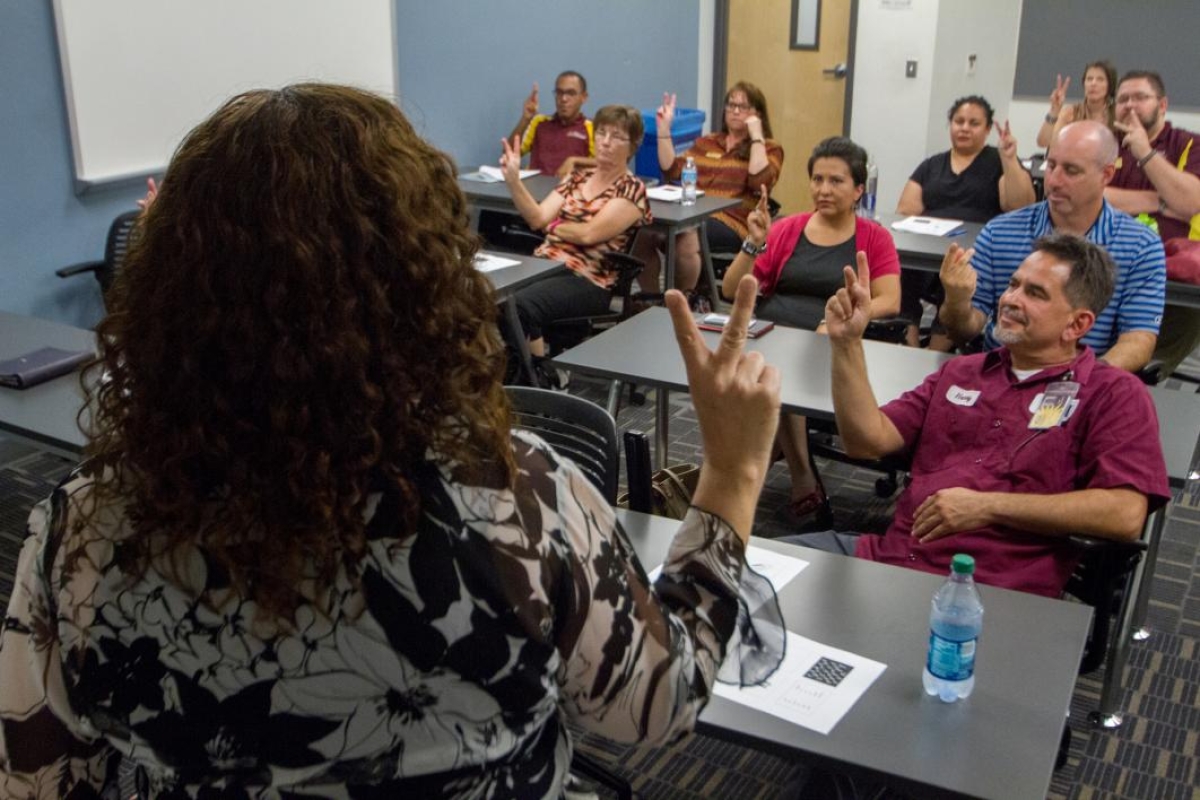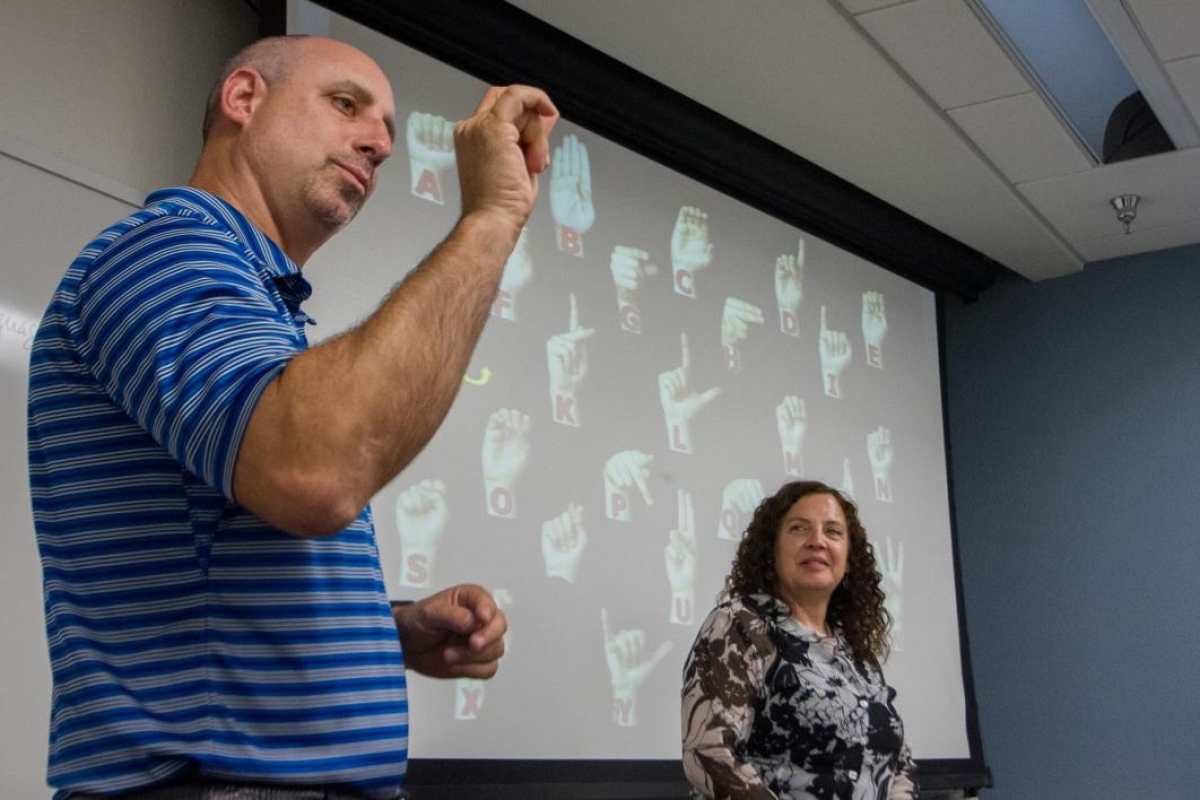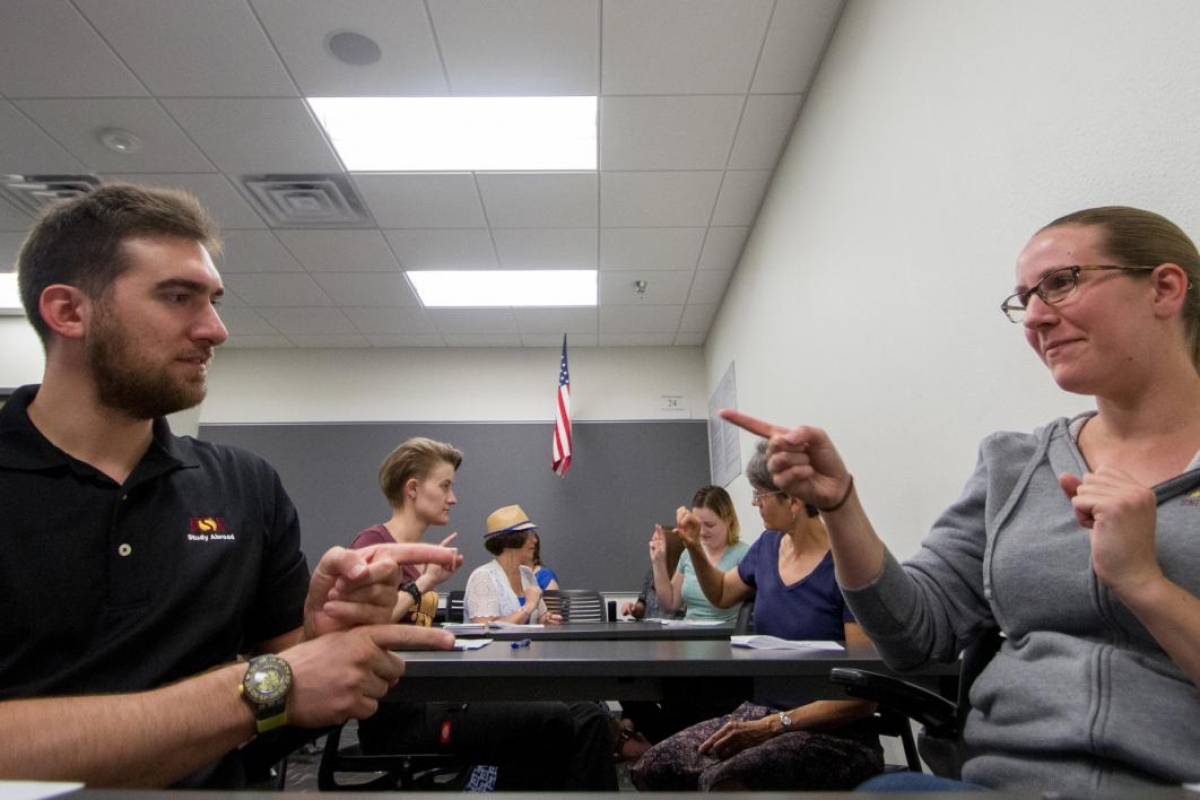Sign language workshop opens door to deaf culture for ASU faculty, staff

Linda Sullivan (left), assistant director of academic services in ASU's Department of English, learns to sign during the workshop.
Photo by: Courtney Pedroza/ASU Now
Scenario 1: You’re walking down a hallway at Arizona State University and realize you need to walk between two people conversing in sign language. What’s the most polite way to do so?
Scenario 2: A deaf student approaches you for help with an academic matter, but you don’t know any sign language. What do you do?
Don't know? Keep reading.
The answers start with a beginner American Sign Language workshop offered this summer for ASU faculty and staff. The workshop teaches basic signs and etiquette, with the ultimate goal of a deeper understanding of deaf culture.
The idea came from a desire to help deaf students succeed at ASU.
“I was searching through ASU News and found this workshop last summer about veterans and enabling veteran-student success,” said Lucy Wolski, a Speech and Hearing Science coordinator with the College of Health Solutions. “And I thought, wouldn’t it be cool to do the same thing for deaf and hard-of-hearing students?”
The free staff workshop was born. It filled up within a day, and a wait list of more than 100 people prompted more workshops. A second is planned for July 13, with a third summer date to be determined.
“The demand was huge, way more than we expected,” said Paul Quinn, director of the American Sign Language program at ASU. “The demand was off the chart.”
The workshops are taught as total immersion, with no spoken words for the two-hour duration. Robin O’Brien, an ASL lecturer in the Department of Speech and Hearing Science who has taught at ASU since 1995, led the first workshop on June 22, teaching basic phrases, the alphabet and etiquette.
Within a half-hour, O’Brien – who is deaf – had students finger-spelling their names and conversing in simple sentences. Though there was no spoken language during the event, it wasn’t silent: O’Brien’s outgoing teaching style and jokes had many chuckling throughout the class.
“The workshop was fantastic,” said Kevin Malone, international coordinator in the ASU Study Abroad Office and one of the workshop’s roughly 20 participants. “Being able to sign basic communication after only a two-hour workshop was more than I imagined; learning sign felt more intuitive than other languages I’ve learned (and taught).”
One common misconception of American Sign Language is that it is simply a signed version of English. In fact, it is a distinct language, with its own grammar and syntax.
ASU offers four semesters of ASL, which fulfills the foreign-language requirement for many programs at the university (and which is also taught immersion style from day 1). There is also the Arizona State ASL Club in which both hearing and deaf students are invited to participate.
Some 105 students have self-identified through the university’s Disability Resource Center as being deaf and hard of hearing, said center director Chad Price. The center offers such services as interpreters, assistive listening devices and housing adjustments (such as light-up doorbells and fire alarms) – but these new workshops are a chance for a wider group of faculty and staff to learn how to make the ASU campuses a more welcoming place.
So what should people do in the scenarios at the top of this story?
In scenario 1, swiftly pass through the group while ducking your head a bit, apologetically. You can also make the sign for “excuse me.” Don’t pause at the edge of the conversation and force them to stop and wave you through.
And in scenario 2, make eye contact, smile and make a gesture of writing on your palm. Then grab a notebook and pen and pass it back and forth. A key part of the etiquette, O’Brien told workshop participants, is to not let other people interrupt with their spoken questions until you have resolved the deaf student’s question – in the same way that you wouldn’t let a hearing person interrupt another hearing person’s question.
That consideration is paramount in knowing how to interact with the deaf and hard-of-hearing on campus, O’Brien said. A simple wave in class, asking a fellow deaf student to join your study group, speaking directly to the deaf person rather than to his or her interpreter – simple things that can go a long way toward a more inclusive community.
“Just treat them like any other person,” she said.
And don’t assume a deaf person can read lips. At the workshop, O’Brien demonstrated how difficult it is to discern the difference between words such as “mom” and “pop” using solely visual cues, which are only about 30 percent accurate. That was one of several myths about deafness that the workshop aims to dispel.
“To me, the benefit was to introduce new people without any previous experience, to knowing that being deaf isn’t a disability,” said workshop participant Evonne Avalos, who works in International Admission Services. “It’s a culture that you’re born into, and as with any culture, there are certain ways of doing things.”
Learn more about the workshops through the College of Health Solutions here; those who wish to join the wait list can do so here.
The Arizona State ASL Club, which usually meets about twice a month, features various activitives, from games to volunteer opportunities to ASL practice and socializing. To find out more, including information about upcoming meetings, check out the club's page at facebook.com/ArizonaStateASLClub.


